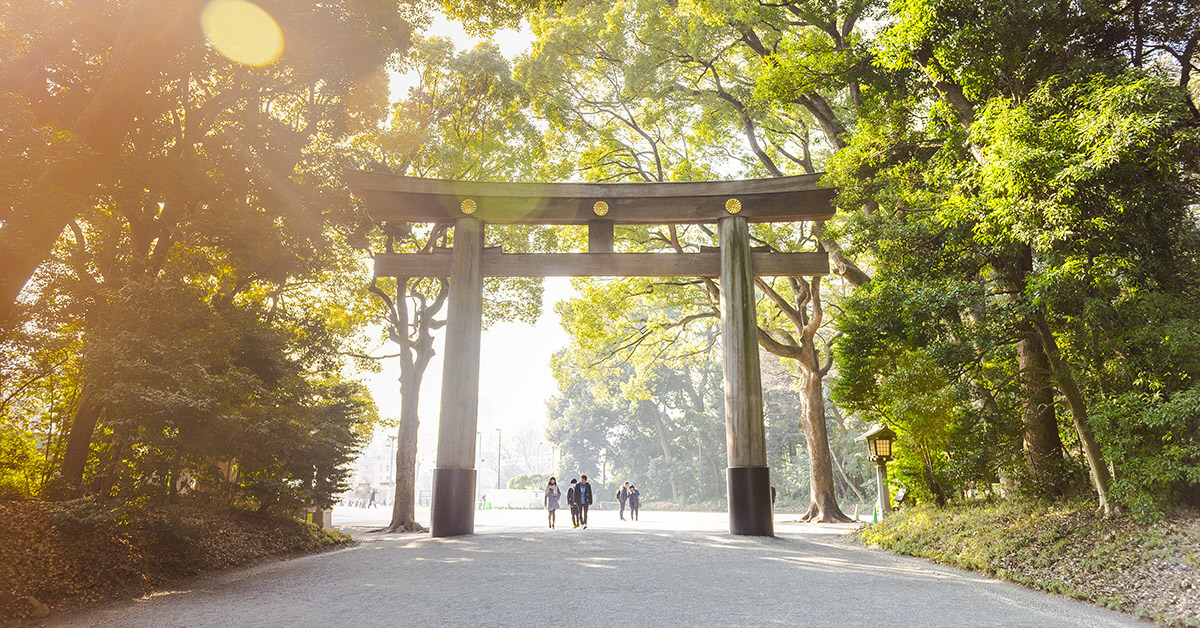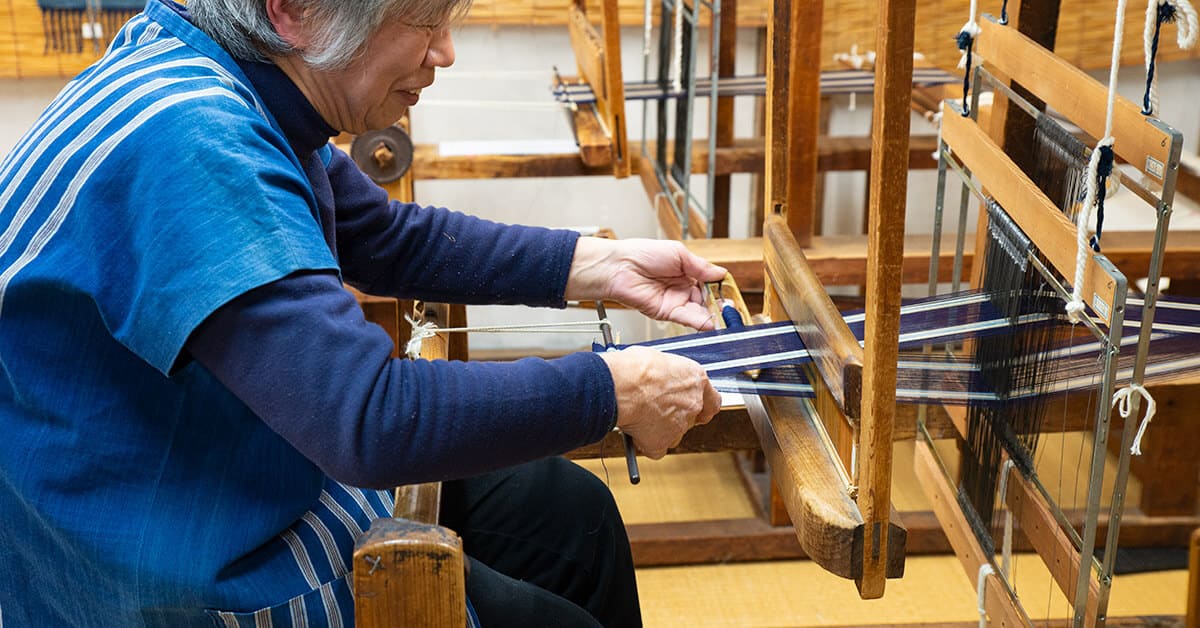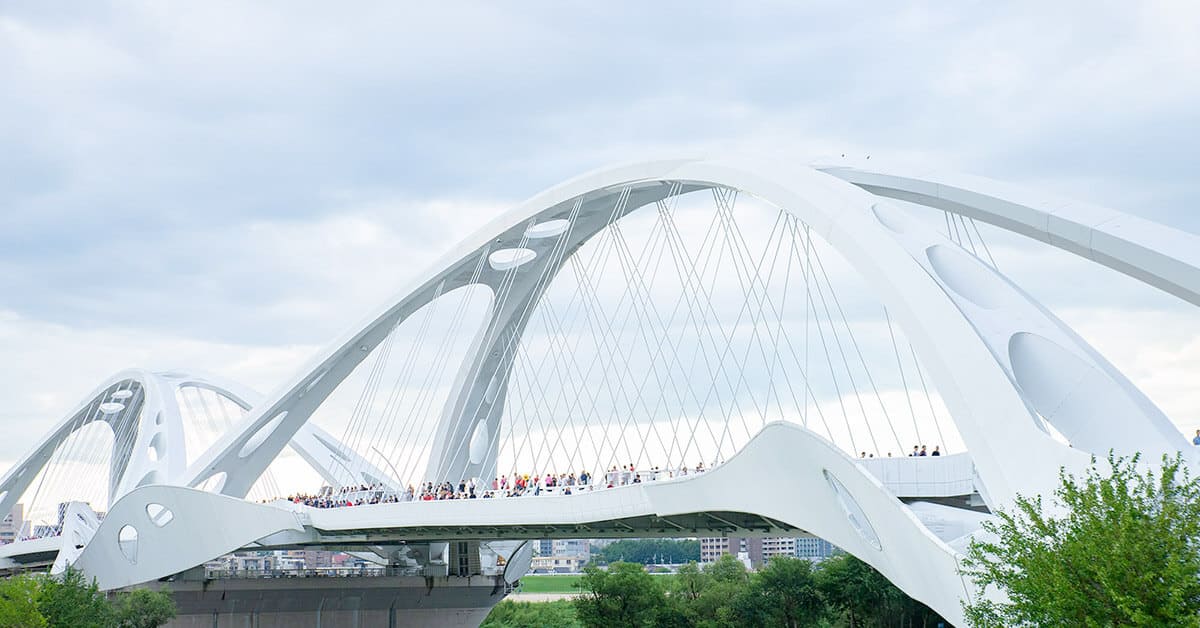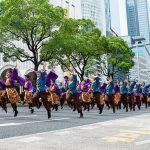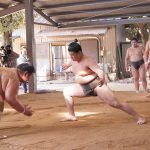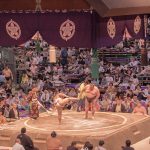Arimatsu, located just about 20 minutes by train from Nagoya Station, is a town well known for being the home of the traditional Arimatsu-Narumi Shibori technique, a fabric dyeing method that has been skillfully crafted over the last 400 years.
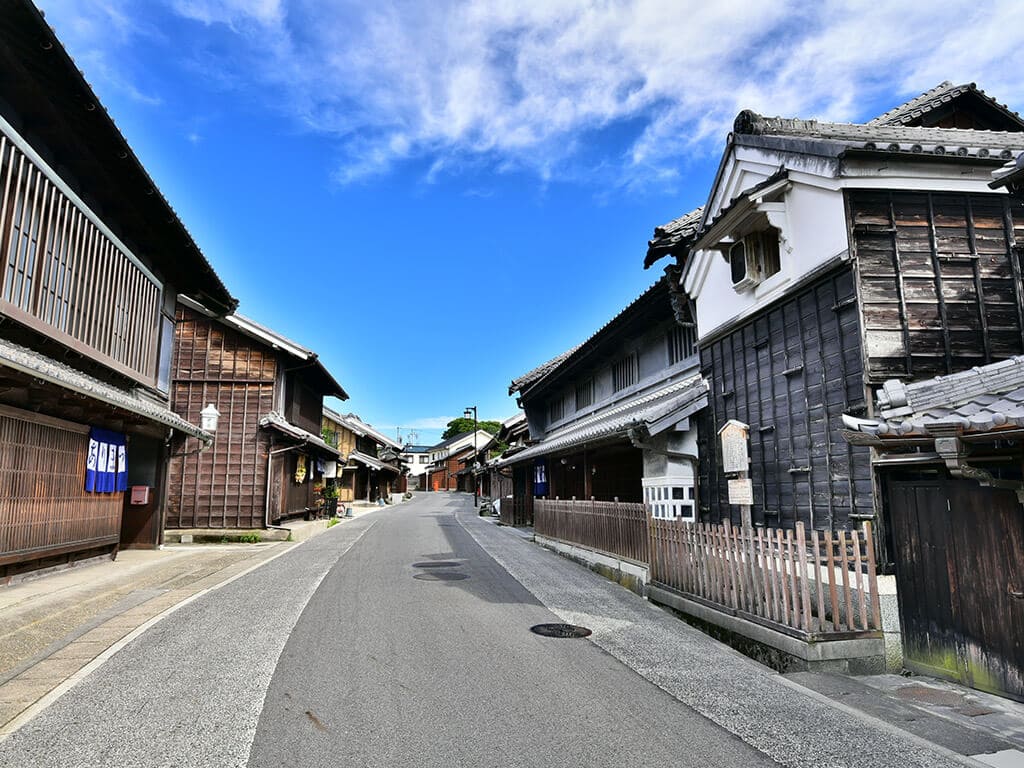
During the Edo Period (1603 – 1868) the town used to be one of many located along the Tokaido, a road connecting the new capital Edo (now Tokyo) and the old capital Kyoto. Thanks to the many travelers passing through and spending money, Arimatsu became a wealthy town with impressive merchant buildings, many of which still remain today. Many of these buildings are being preserved with great care and have been designated as Tangible Cultural Heritage of Japan.
Article Contents
The Origin Story of Arimatsu
With the change of the capital of Japan to Edo (Tokyo), the new ruler of the country, Shogun Tokugawa Ieyasu, ordered all Daimyo (feudal lords) to travel to Edo every two years to pay tribute to him. For this reason, the Tokaido Road was built, with 53 designated rest stations called post towns connecting Kyoto and Edo. Tokugawa Ieyasu also encouraged the founding of settlements around these stations, one of which was Arimatsu.
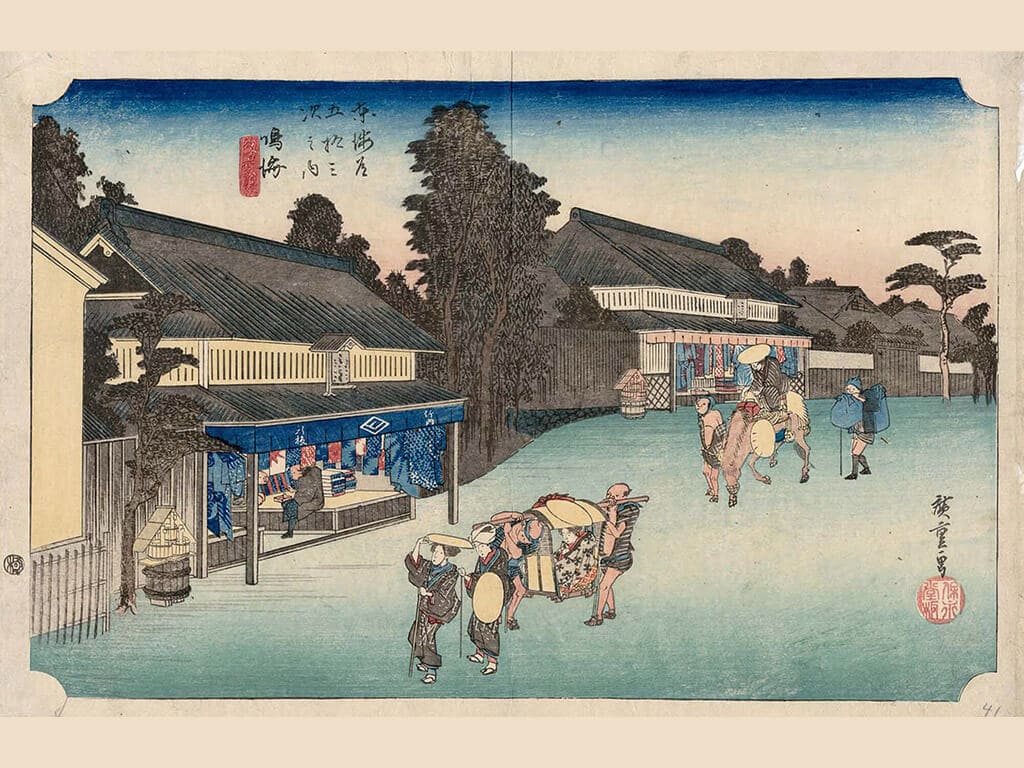
The town of Arimatsu was founded by an official decree of the Owari Tokugawa, the feudal clan ruling the region. The decree was issued in 1608. Arimatsu became a town along the Tokaido route, located between Chiryu Station and Narumi Station. At the time of its founding, Arimatsu had a total of eight resident families.
The Origins of Arimatsu-Narumi Shibori
The fabric dyeing technique known as “Shibori” was introduced to Japan about 1300 years ago from China. It came together with other Chinese traditions such as Chinese fashion. All such imports from China were adapted to Japanese traditions and tastes and, over time, developed into unique techniques and styles.
The Shibori was originally an art of the poor. In feudal Japan, most people could not buy expensive fabrics such as cotton or silk, so clothes were often made from cheap hemp fabrics. People also could not afford to replace clothes regularly, so repairing and dyeing clothing was commonplace, and Shibori’s art evolved as a means to make old clothes look newer.
During the long period of peace under the Tokugawa Shogunate, various arts flourished, including painting, poetry, calligraphy, lacquer, ceramics, and the tea ceremony. Additionally, many different local tie-dye techniques and styles emerged. Shibori developed along two separate paths: one as a method of decorating the silk used to produce kimonos for the aristocracy of Japan (largely made in Kyoto), and another as a part of folk art that varied significantly between regions.
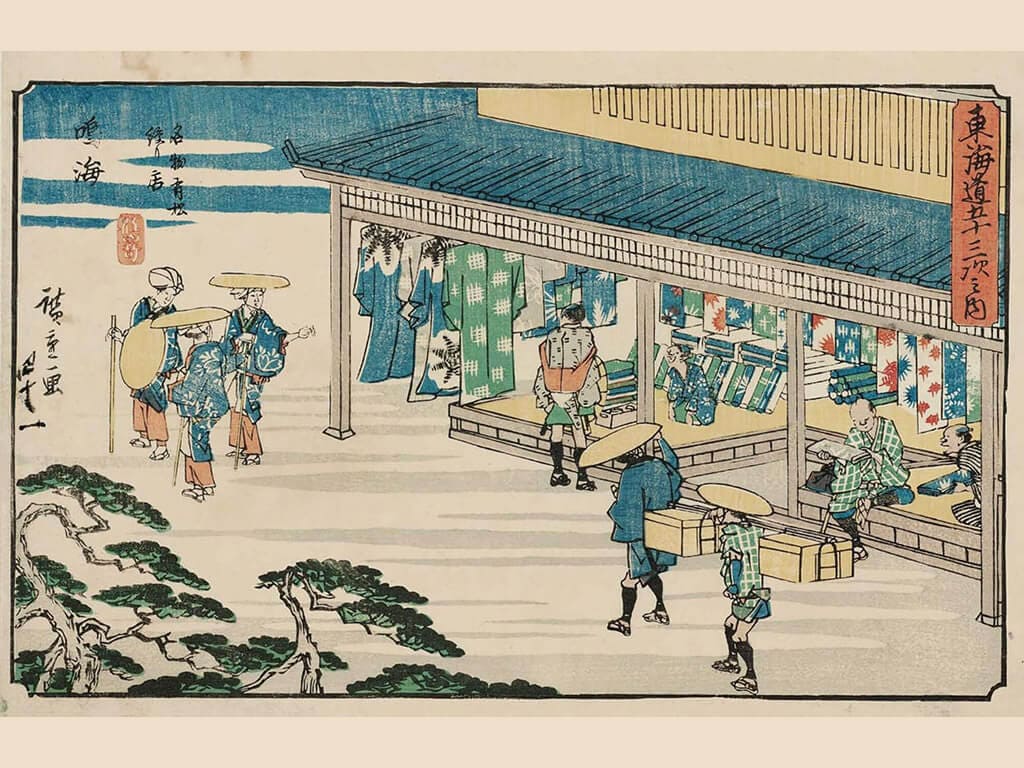
The history of Arimatsu’s success in the Shibori dyeing industry dates back to the construction of Nagoya Castle (1610-1614) just shortly after Arimatsu was established. During that time, Tokugawa Ieyasu used workers from all over Japan to build this impressive castle in record time and that’s when a group of workers from Bungo (current Oita Prefecture) brought with them the technique of Shibori.
Coincidentally, in 1608, Shokuro Takeda, a merchant from the Chita Peninsula, moved to Arimatsu with seven other households to establish a settlement and a new cottage industry in the backcountry. Takeda saw an opportunity in the newly established cotton production in his home region of nearby Chita and set out to manufacture high-quality cloths using the innovative dyeing techniques of the Bungo workers.
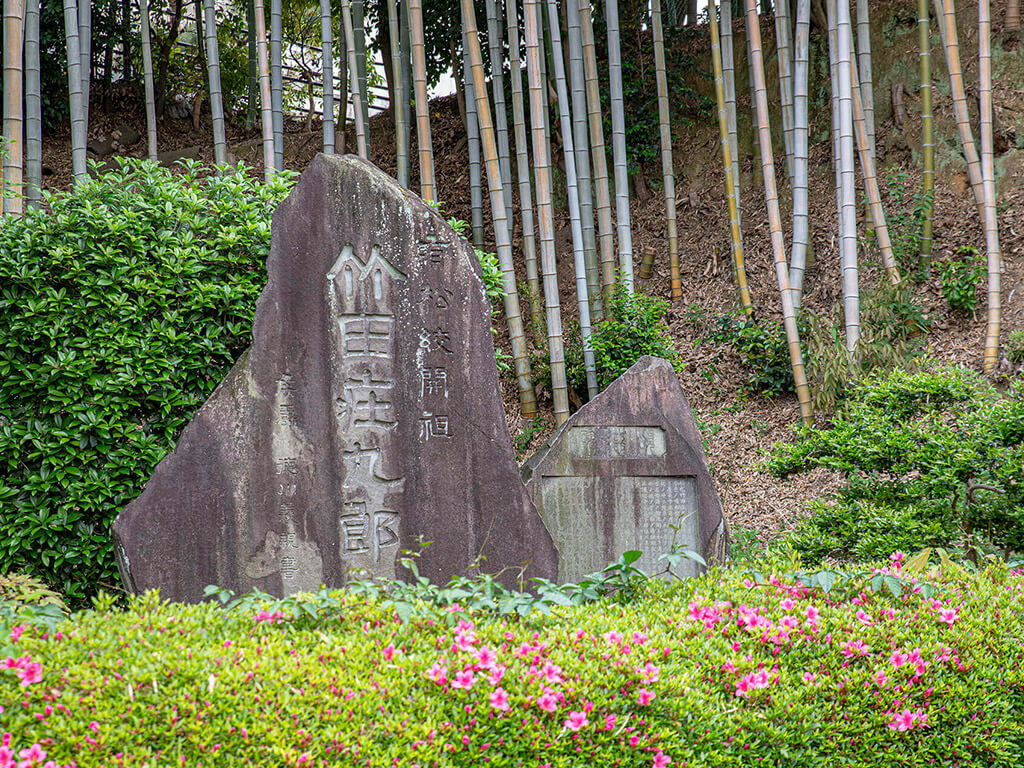
Shokuro Takeda marketed those fabrics by the name of “Kukurizome” and developed the technique to create and sell hand towels and other handy products. By 1620 the small Arimatsu settlement had grown to fifteen families.
As the traffic increased along the Tokaido road during the beginning of the Edo Period, travelers would buy towels and fabrics made by the people of Arimatsu, becoming a staple product along the long road. And by 1633 its dyeing trade was well established.
The demand for Arimatsu-Narumi Shibori products has continued to this day, and local dyers, who have inherited the techniques developed over the past 400 years, continue to manufacture beautiful and unique Kimono, Yukata, and other traditional items such as Noren (Japanese curtains or Japanese fabric room dividers).
Currently, there are more than one hundred types of Shibori techniques found in Arimatsu, among them we can highlight: Nui Shibori (sew and tie before dyeing), Kumo Shibori (pattern in the form of a spider web), Sekka Shibori (flower pattern), Miura Shibori (dyeing method invented by the wife of a Bungo doctor) and Kanoko Shibori (mottled pattern).
The Top Sights in Arimatsu
You can feel traditional Japan from the moment you step off the train at Arimatsu Station. The old town of Arimatsu stretches about 1 km along the Tokaido road. In about half a day, you can thoroughly explore Arimatsu’s main street, flanked by Edo-style wooden houses, as well as other spots such as shrines, temples, restaurants, and cafes.
| NOTE: The original buildings were destroyed by a fire in 1784. Therefore, the oldest houses you see today date back to a year after the fire when all structures of Arimatsu were completely rebuilt. Most buildings are roughly 100 years old. |
Also, you should consider making a stop at the many shops selling Arimatsu Narumi Shibori products or perhaps try your hand at making your own Shibori souvenir.
Arimatsu Tenmansha Shrine
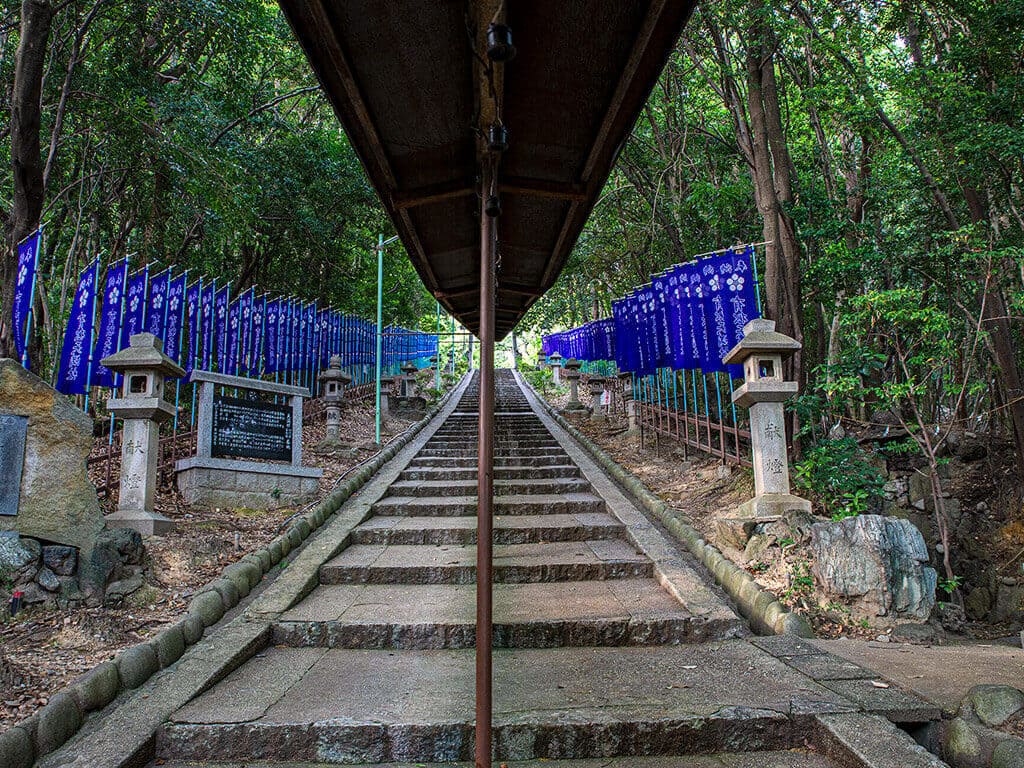
Arimatsu Tenmansha is a Shinto shrine where the annual spring and autumn festivals of Arimatsu are held. During the autumn festival, the three floats (Hoteisha, Karakosha, and Jingu Kogosha) called Dashi are the highlight. The three floats are taken from their respective warehouses in different parts of Arimatsu and carried by local men up the steep steps to the Shrine.
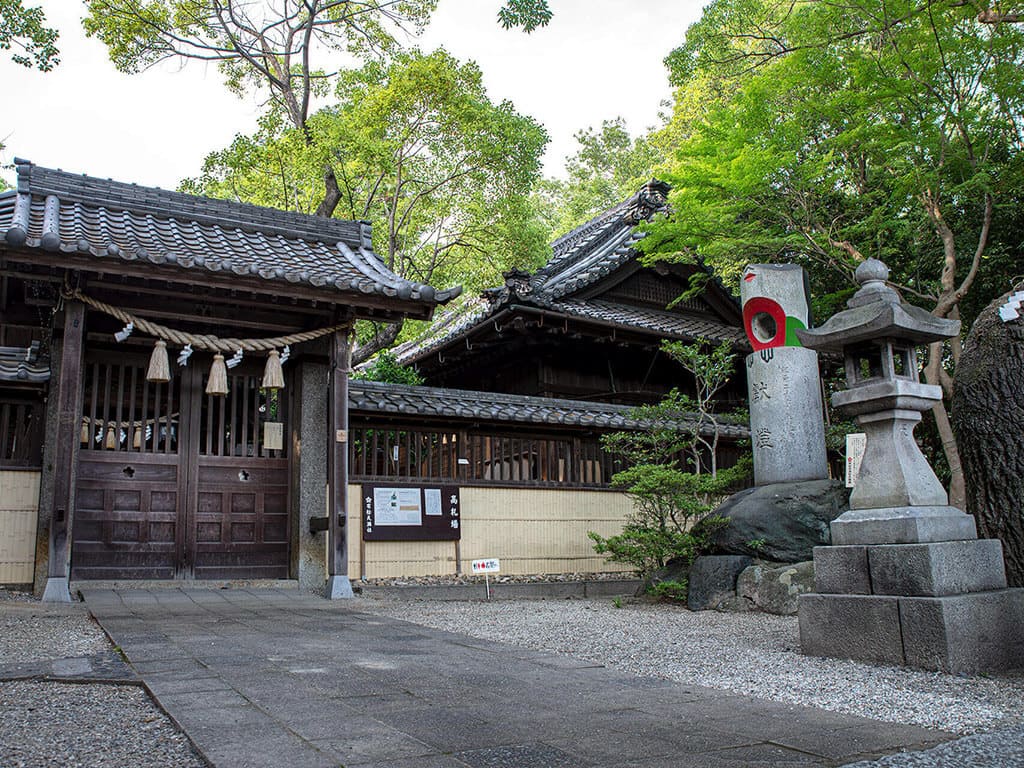
On the grounds of the shrine, you will find a Usokae bird-shaped stone lantern. Usokae birds are considered messengers of Sugawara Michizane, or Tenjin, the deity of learning, academics, scholarship, and intellectuals. The bird’s name, Uso, is a homonym for a lie or falsehood in Japanese. Moreover, It is believed that these birds can exchange your untruths for the blessings of the deity.
Gionji Temple
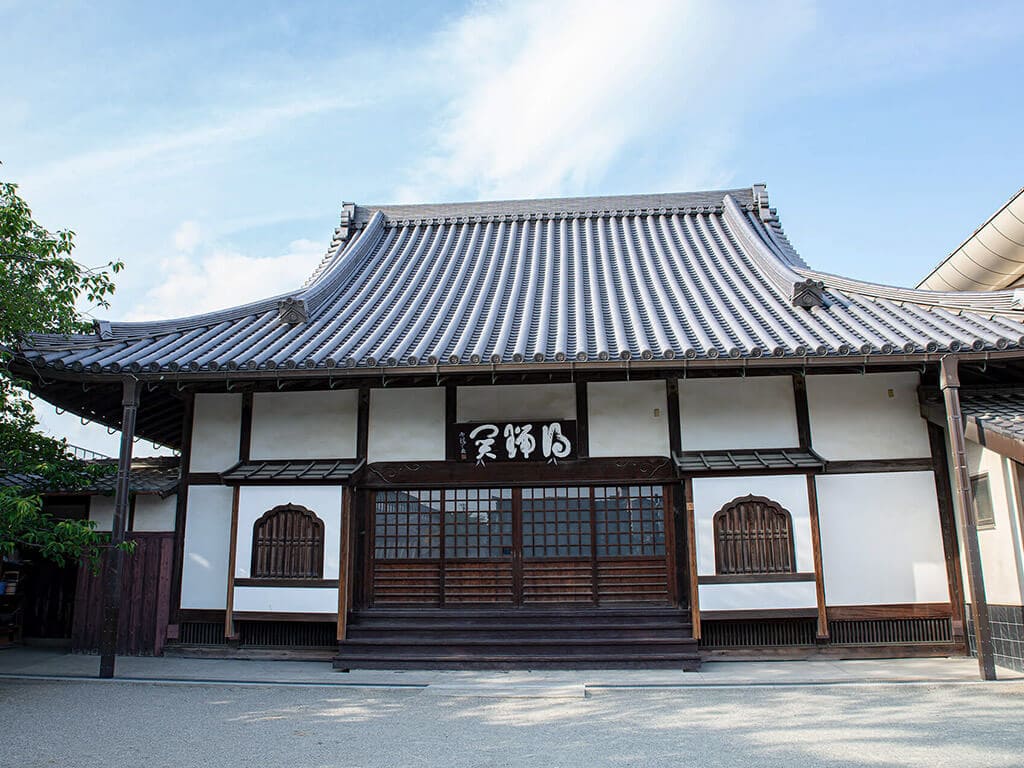
Gionji is a small Buddhist sanctuary that lies on the westward end of Arimatsu. It was built in 1755 and moved from Endoji Temple, in Narumi, to its current location. Gionji contains 33 statues of Kannon Bodhisattva, the goddess of mercy, and statues of the 16 Arhats, protectors of the goddess. Many of Arimatsu’s residents are laid to rest at this temple, which belongs to the Buddhist Soto sect.
Nishimachi Float House
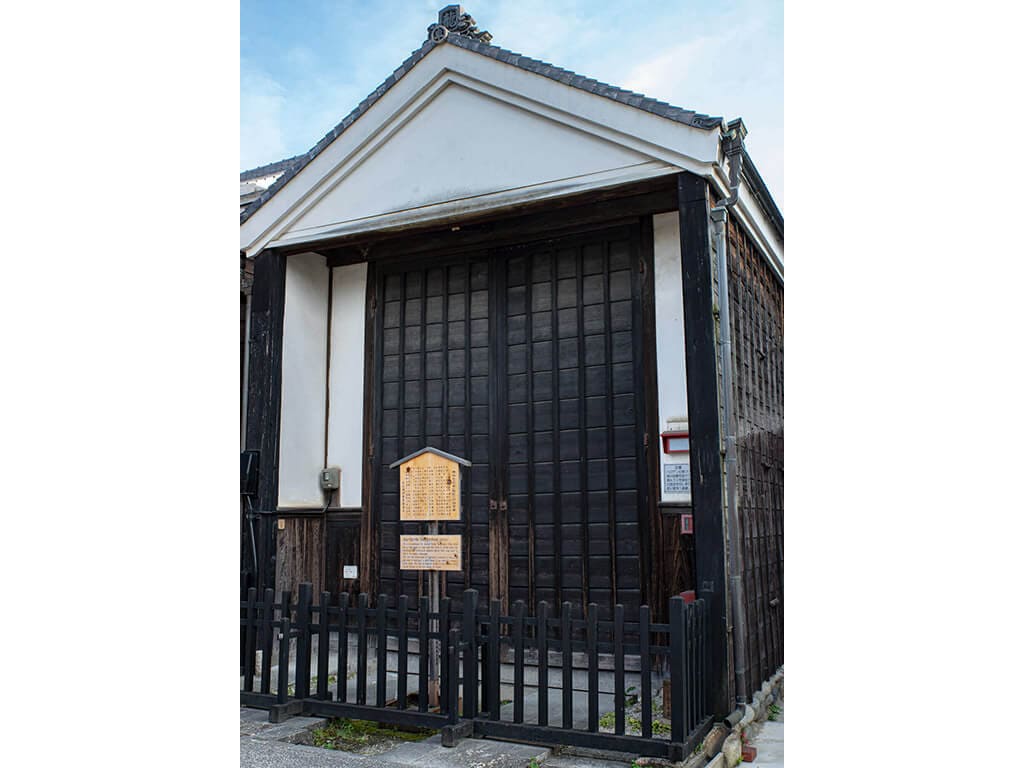
The Nishimachi Float House is a building built in 1873 that houses one of the 3 festival floats, the Jingo Kogosha float. This float was manufactured in Nagoya in 1873. On the top of the float are three mechanical puppets modeled after images of the Empress Jingu (a legendary figure), Takenouchi-no-Sukune (a legendary hero who helped the Empress), and a Shinto priest.
| NOTE: The Nishimachi float house as well as the other float houses are not generally open to the public. They are exhibited only during the two annual Arimatsu festivals. |
Kozuka House
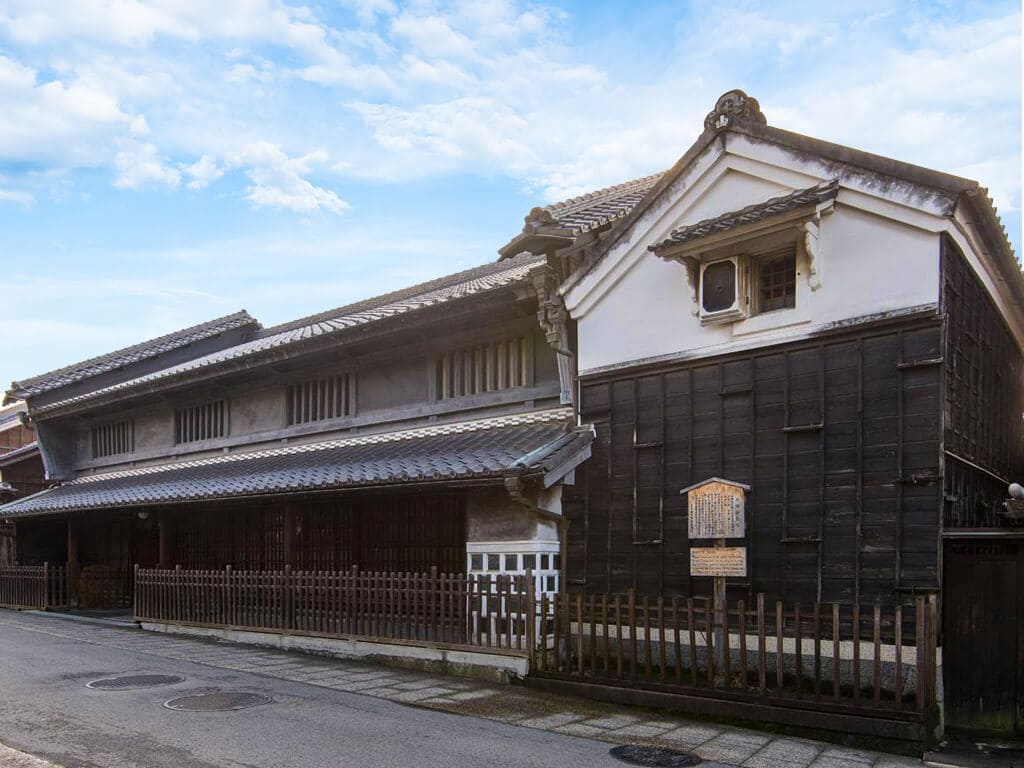
The Kozuka House, originally built between 1661 and 1673, was the residence of the merchant family Kozuka. The main features of this building are the Udatsu walls, raised walls that were built on either ends of a building to prevent the spread of fire from neighboring houses; and the structure of the tie-dye shop that remains until now.
Oka House
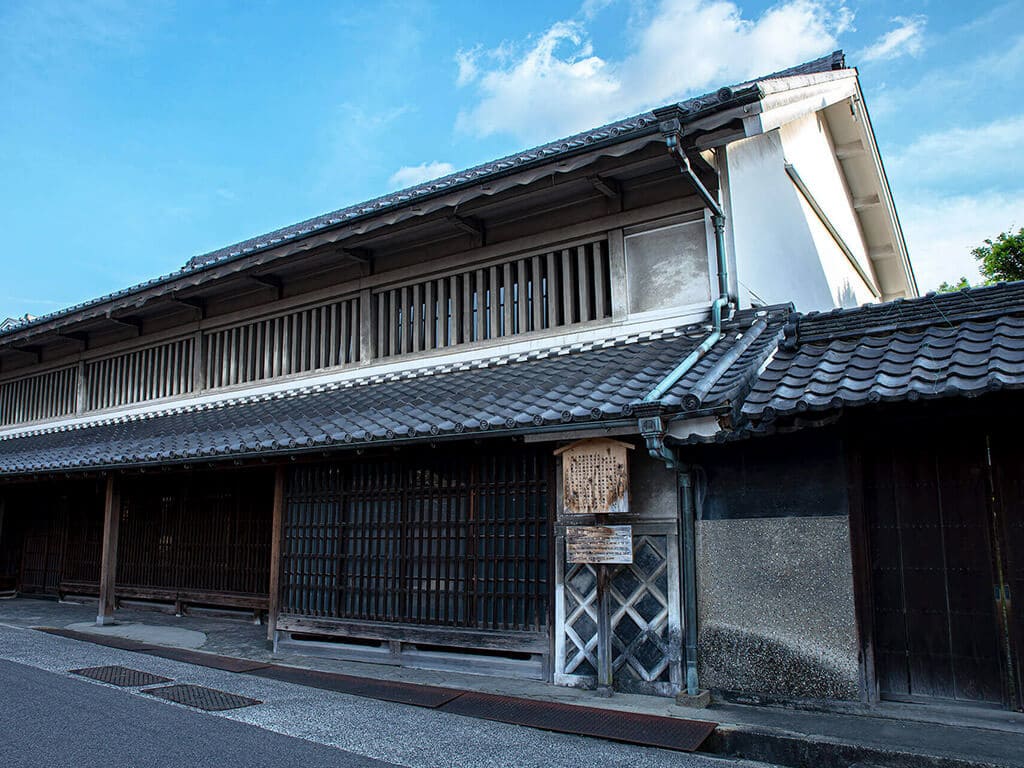
The Oka House was built at the end of the Edo Period and is the largest of Arimatsu’s traditional buildings and still features the same floor plan as in the Edo Period when it was used as a tie-dye shop.
Furthermore, the house is open to the public, so you can walk in and picture what a tie-dye merchant’s shop was like during the Edo period. High ceilings, open spaces, and gigantic tree trunks are characteristic of this impressive building. The reading room is especially fascinating for its pyramid-shaped ceiling with a hole in the roof and mirrored walls to focus even the smallest amount of sunlight for reading.
Takeda House
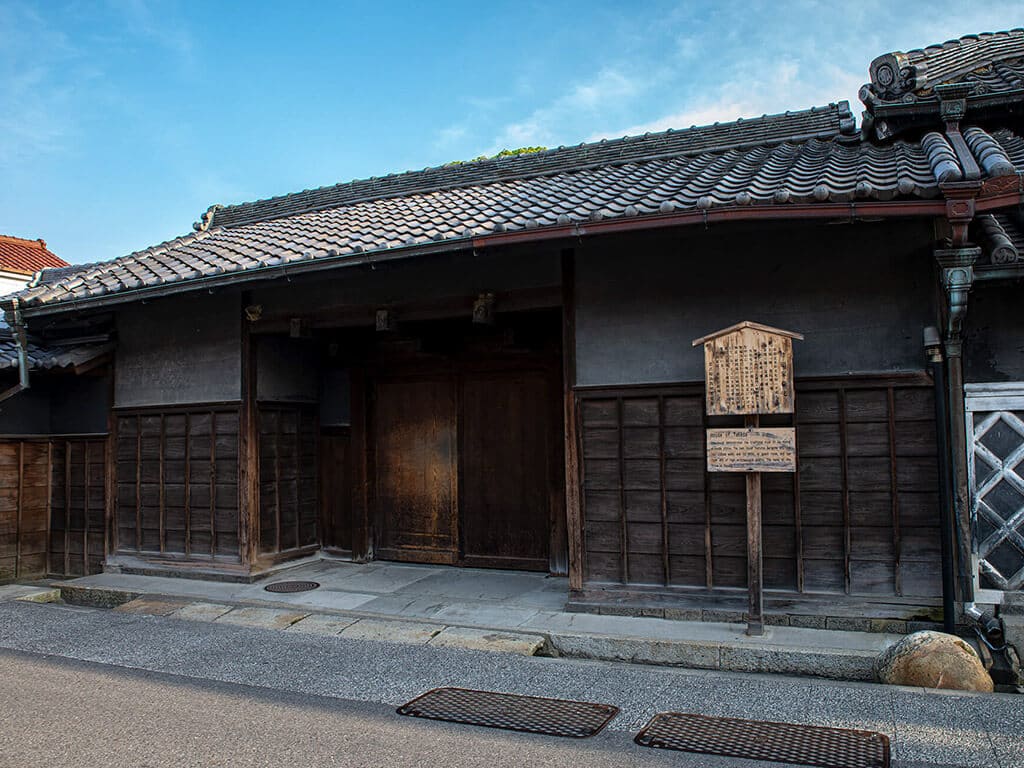
The Takeda House was the residence of Shoukuro Takeda, the founder of Arimatsu Shibori, and is one of the landmarks along Arimatsu’s main street. The building is a typical merchant’s house that consists of a main house, three warehouses, and a tea house.
The building was built in the Shoin-zukuri style, one of Japan’s most important residential architectural styles characterized by modesty of scale, asymmetry, and irregularity on its floors with solid wall construction and sliding screens. Furthermore, the tea ceremony room is said to have been visited by the 14th Tokugawa Shogun.
Nakamachi Float House
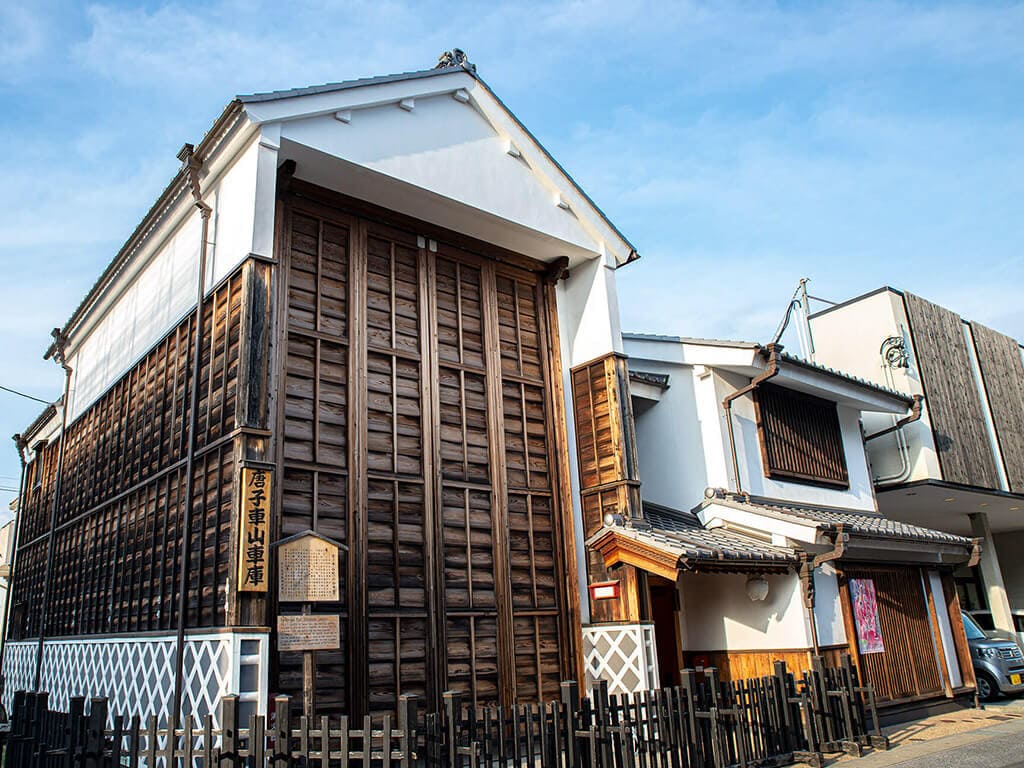
The Nakamachi Float House is the building that houses the Karakosha Float, built around 1875. Similarly to the other float warehouses, this one is a tall structure with a gigantic door in the front. Unfortunately, the inside of the house, as well as the float itself, aren’t open to the public.
Hattori House
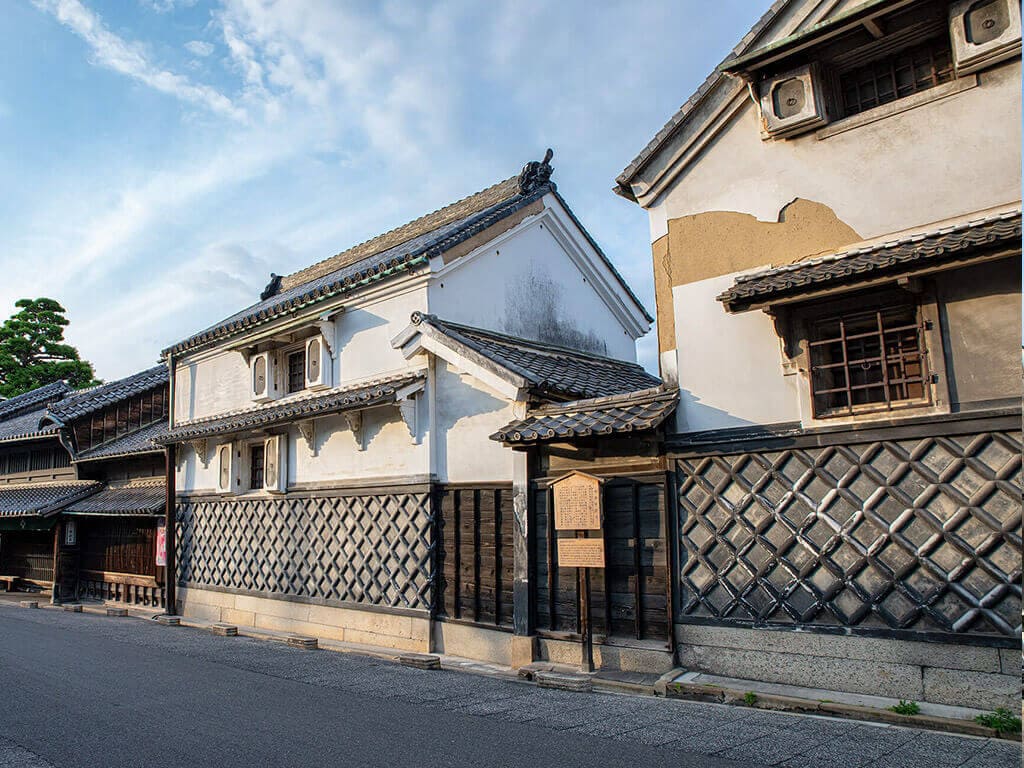
The Hattori Magobe’s residence, which currently houses the Igetaya shop, was established in 1790 as a tie-dye shop. In this building, you can see the fireproof construction techniques mentioned earlier, one of Arimatsu’s distinctive features. Hattori House has been used as a shop selling Arimatsu Shibori products for more than 230 years.
Arimatsu Dashi Kaikan Museum
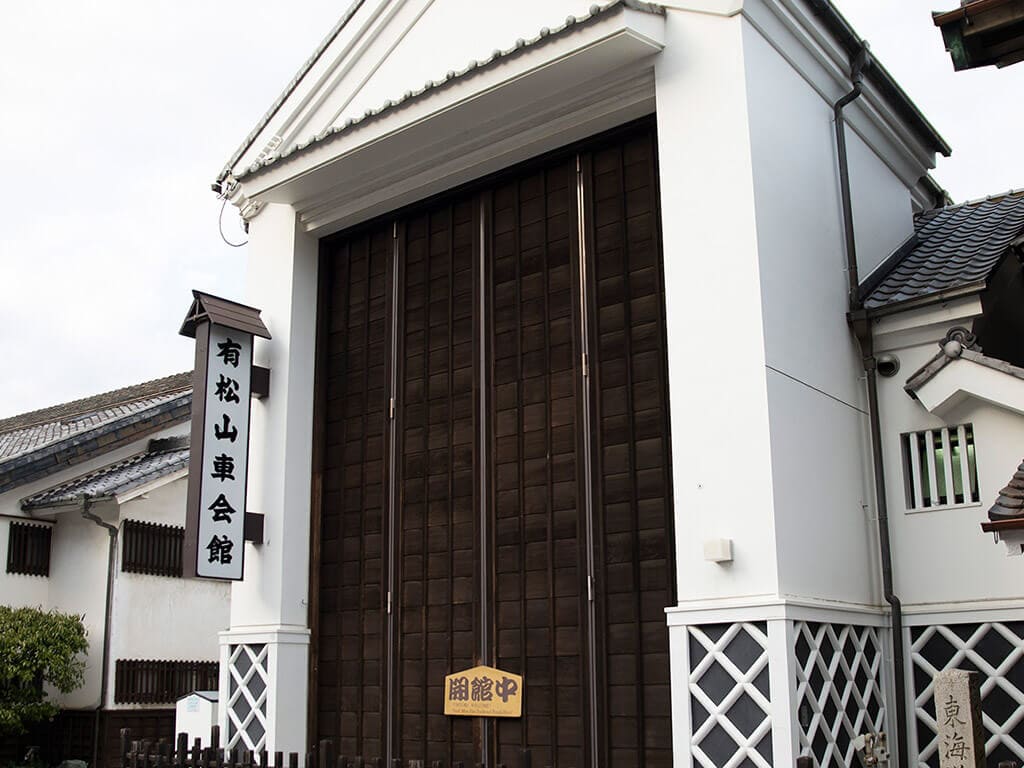
The Arimatsu Dashi Kaikan Museum provides detailed information about the Dashi floats used during the Arimatsu Autumn Festival. Outside the festival period, one of the three Dashi floats is exhibited here in the museum, along with a video of the festival that can be seen on the first floor. Additional materials and other displays related to the festival are shown on the second floor. You can also observe the Dashi float from the top, a rare opportunity as this is usually not possible with the multi-storied floats.
Arimatsu Dashi Kaikan Museum (有松 有松山車会館)
Entry Fee: Adult 200 yen, Children 6 to 18 years 100 yen
Opening Hours: Only weekends and holidays from 10:00 – 16:00
Address: 2338 Arimatsu, Midori Ward, Nagoya, Aichi 458-0924
Website | Google Maps
Get to know the art of Ikebana – Japanese flower arrangement -, and enjoy a tour around Arimatsu with a local Ikebana teacher by joining an Ikebana Flower Arrangement Lesson and Tea.
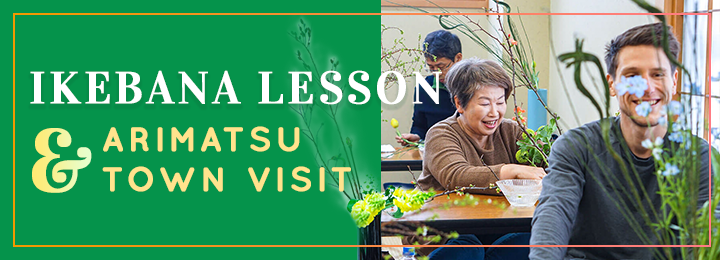
The Best Places to Experience Arimatsu Shibori
If you want to experience Arimatsu Shibori, it is best to join a workshop or a short lesson where you can learn about the different dyeing techniques. Around Arimatsu, you will find multiple workshops and facilities to experience Arimatsu Shibori hands-on.
Please be aware that for most tie-dyeing experiences you will need to make a reservation in advance, and workshops are usually conducted only in Japanese.
Arimatsu Narumi Shibori Tie-Dyeing Museum
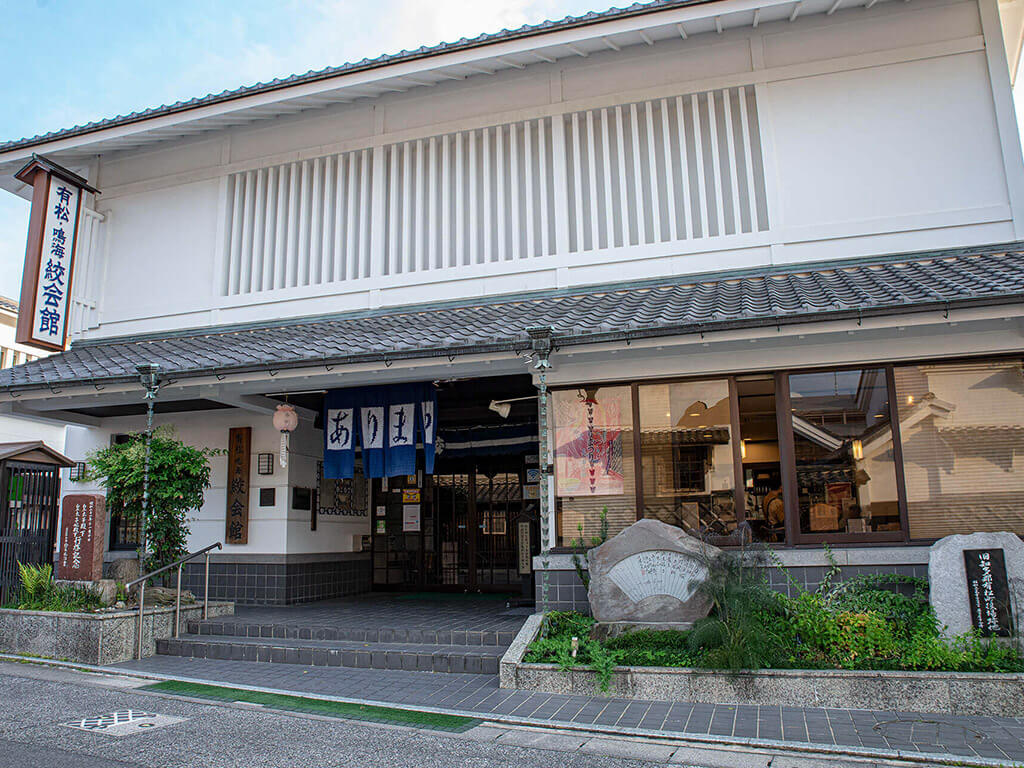
In this museum, you will learn about the history and the production process of Arimatsu Shibori. The first floor is a store that offers various products made using Arimatsu Shibori tie-dyed fabrics such as clothing, handkerchiefs, fans, and face masks.
On the second floor, there is an exhibition hall where you can see fabrics with different patterns of Arimatsu Shibori, and where you will discover the history and cultural background of Arimatsu. The exhibition hall offers lots of information in English and even has a fascinating video showcasing the tie-dying process with English subtitles.
It also features a workshop area where you can create a tie-dyed handkerchief and watch some of the talented residents work on preparing different fabrics for dying.
*Tie-dying workshops require prior reservation.
Arimatsu Narumi Shibori Tie-Dyeing Museum (有松・鳴海絞会館)
Entry Fee: adults 300 yen, children 100 yen
Opening Hours: 9:30 – 5:00
Address: 3008 Arimatsu, Midori Ward, Nagoya, Aichi 458-0924
Website | Google Maps
Suzusan
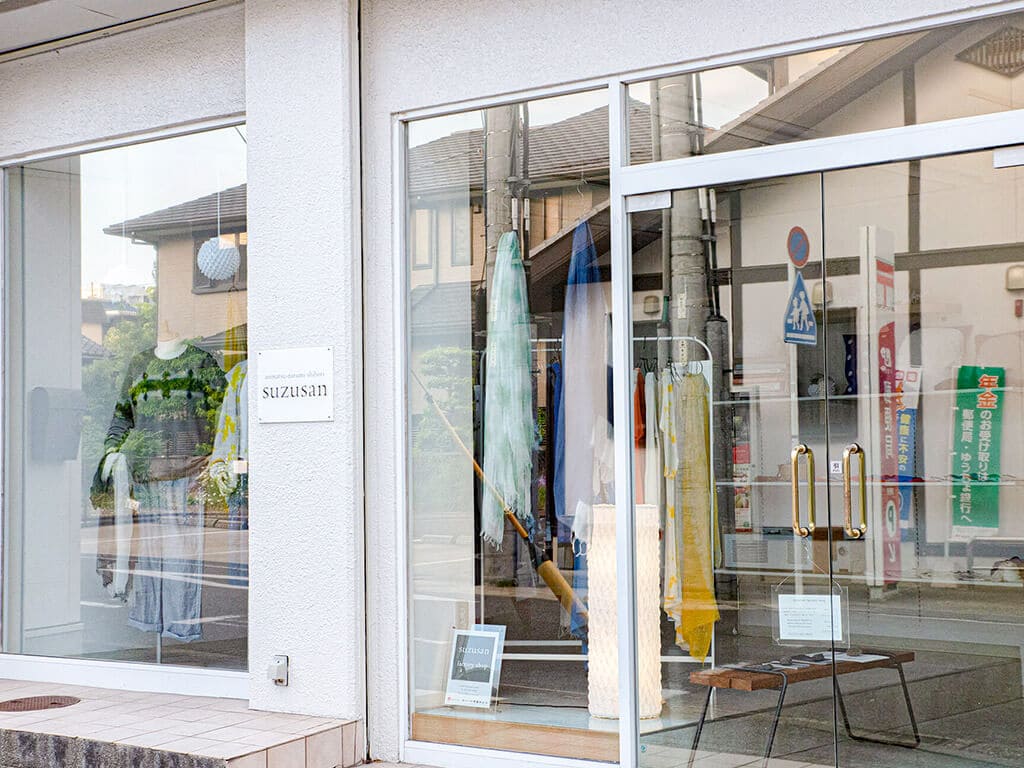
This shop is part of a family business that has been cultivating its knowledge of handmade fabrics for more than 100 years. Additionally, Suzusan has a factory and store where they sell their Arimatsu Shibori products and conduct various workshops.
They offer a shorter, easier 40-minute class where you can learn basic tie-dyeing techniques using wood plates, rubber balls, and bands, as well as a longer, 2-hour class that covers more time-consuming techniques such as stitching or intricate tying. You can decorate a variety of fabrics, including handkerchiefs, scarves, and t-shirts. For more details check out this PDF.
Suzusan (有松・鳴海絞会館)
Address: 3026 Arimatsu, Midori Ward, Nagoya, Aichi 458-0924
Opening Hours: 11:00 – 5:00; closed on Wednesdays
Website | Google Maps
Konsei
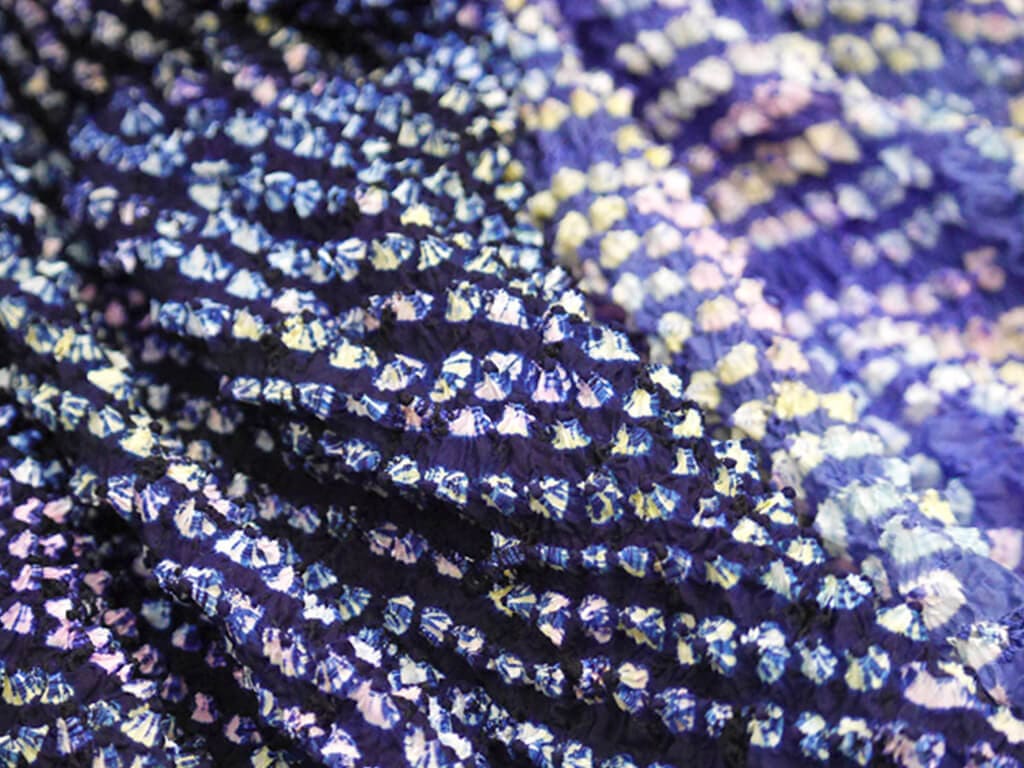
At Narumi Konsei you can have a very unique experience dying fabric for a Yukata using the Sekka Shibori technique, which consists of a series of triangle folds that result in beautiful starburst designs.
You can choose from different patterns and colors. Once you have practiced your skills on a hand towel, you will be ready for the 13-meter-long fabric used to sew a Yukata. The whole experience takes about 5-6 hours, from 10:00 to 16:00 and it costs around 17,000 yen/person + taxes + shipping fees.
*This experience is available with an advanced reservation and is offered only in Japanese. Available only on weekdays. Minimum participants 3, maximum 5.
Konsei (こんせい)
Address: 21 Shimonaka, Narumicho, Midori Ward, Nagoya, Aichi 458-0801
Opening Hours: 9:30 – 5:00; closed on Saturdays and Sundays
Website (Japanese Only) | Google Maps
Annual Festivals of Arimatsu: Celebrating Tradition and Culture
Arimatsu is well-known for its two vibrant annual festivals that beautifully showcase its rich cultural heritage and traditions. These celebrations highlight the community’s deep-rooted connection to its past while offering visitors a unique glimpse into the lively and colorful spirit of Arimatsu.
Arimatsu Shibori Tie-Dye Festival
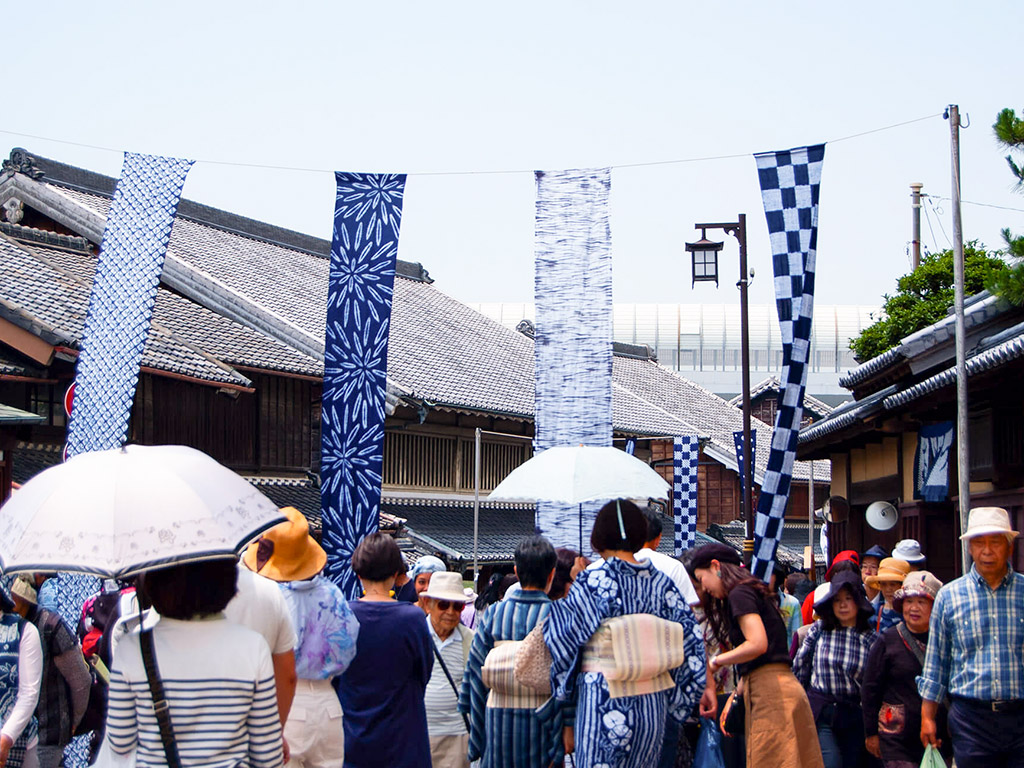
Every year, at the beginning of June, the Arimatsu area celebrates its heritage during the Arimatsu Shibori Tie-Dye Festival. For an entire weekend, the festival features meticulously crafted textile art through workshops, demonstrations, and parades. The event not only aims to preserve this unique cultural heritage but also brings together artisans and enthusiasts from all over in a colorful and lively atmosphere.
Visitors can explore Arimatsu’s charming streets lined with historic buildings, enjoy local cuisine, and purchase beautifully crafted Shibori products. Additionally, there are numerous hands-on tie-dye workshops for all ages and skill levels, allowing participants to create and take home a unique handmade souvenir.
Arimatsu Shibori Tie-Dye Festival
Date and Time: June 1st (Saturday) and June 2nd (Sunday), 2024; 9:00 – 5:00;
Address: Area around the Arimatsu Tokai Road (Arimatsu, Midori-ku, Nagoya-shi, Aichi)
Access: 5-min. walk from Arimatsu Station on the Meitetsu Line
Website | Google Maps
Arimatsu Tenmansha Shrine and Autumn Festival
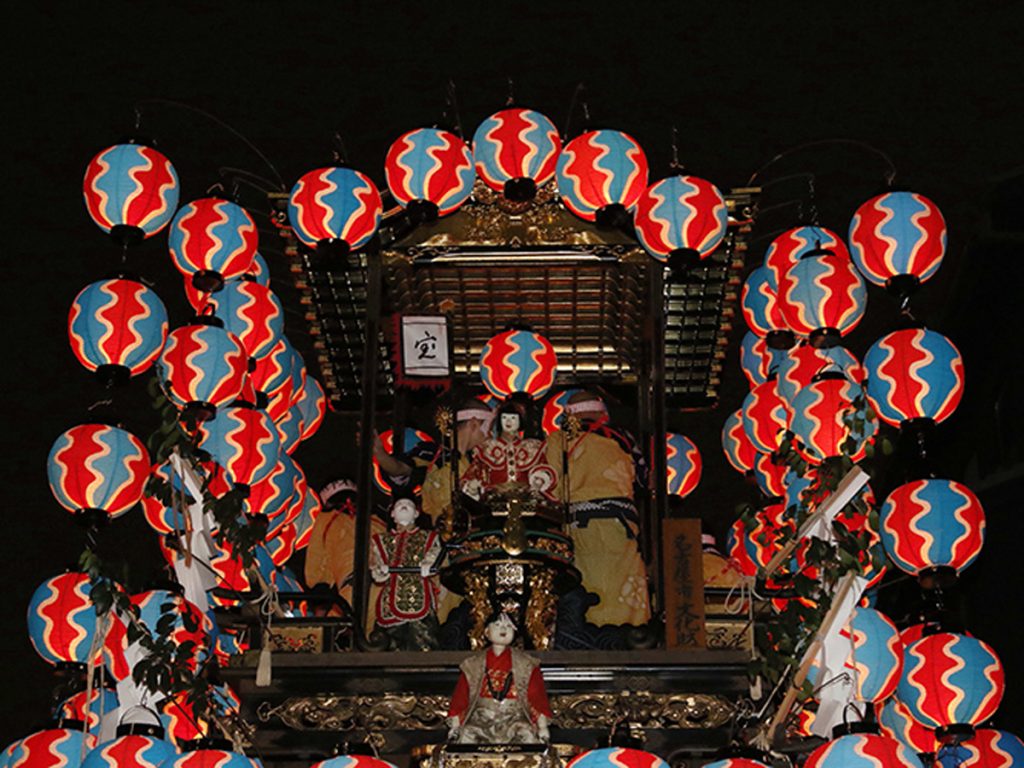
Also known simply as the Arimatsu Floats Festival, this celebration lights up a chilly autumn evening once a year. Held annually on the first Sunday of October, Arimatsu proudly parades its three floats, which are designated by Nagoya City as Tangible Folkloric Cultural Properties.
Moreover, each float is beautifully decorated, and the top features mechanical puppets called Karakuri. These sophisticated mechanical puppets are controlled by highly skilled puppeteers using silk cords to make them move and perform demonstrations such as calligraphy and dances.
The combination of hundreds of lanterns, men bravely energetically the floats around town, and the puppets performing makes the Arimatsu Floats Festival a must-see event.
Arimatsu Tenmansha Shrine and Autumn Festival
Date and Time: October 6, 2024 (Sunday); 9:00 – 5:00;
Address: Area around the Arimatsu Tokai Road (Arimatsu, Midori-ku, Nagoya-shi, Aichi)
Access: 5-min. walk from Arimatsu Station on the Meitetsu Line
Website | Google Maps
Shops Where You Can Buy Arimatsu-Narumi Shibori Goods
If you don’t have the time or simply don’t want to go through the trouble of making your own tie-dyed souvenir, you can conveniently buy professionally made items at many of the shops in Arimatsu.
Marimomen
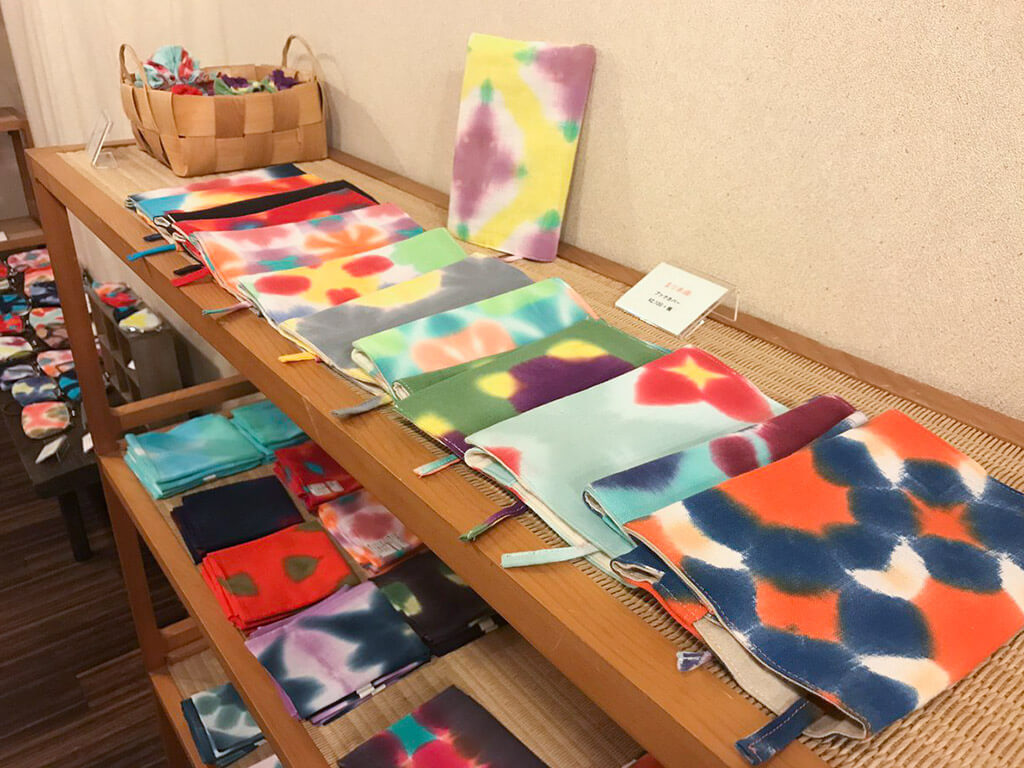
At Marimomen, you can find accessories and clothing made using a modern Sekka Shibori technique by two young designers. They have reinterpreted traditional Shibori techniques in their own unique style, using vivid and colorful fabrics to create distinctive items such as shoes, handbags, yukatas, scarves, and even decorative items like coasters.
Marimomen (まり木綿)
Address: 1901 Arimatsu, Midori Ward, Nagoya, Aichi 458-0924
Opening Hours: 10:00 – 16:00; closed Tuesdays, Wednesdays and Thursdays
Website (Japanese only) | Google Maps
Arimatsu Shibori Hisada
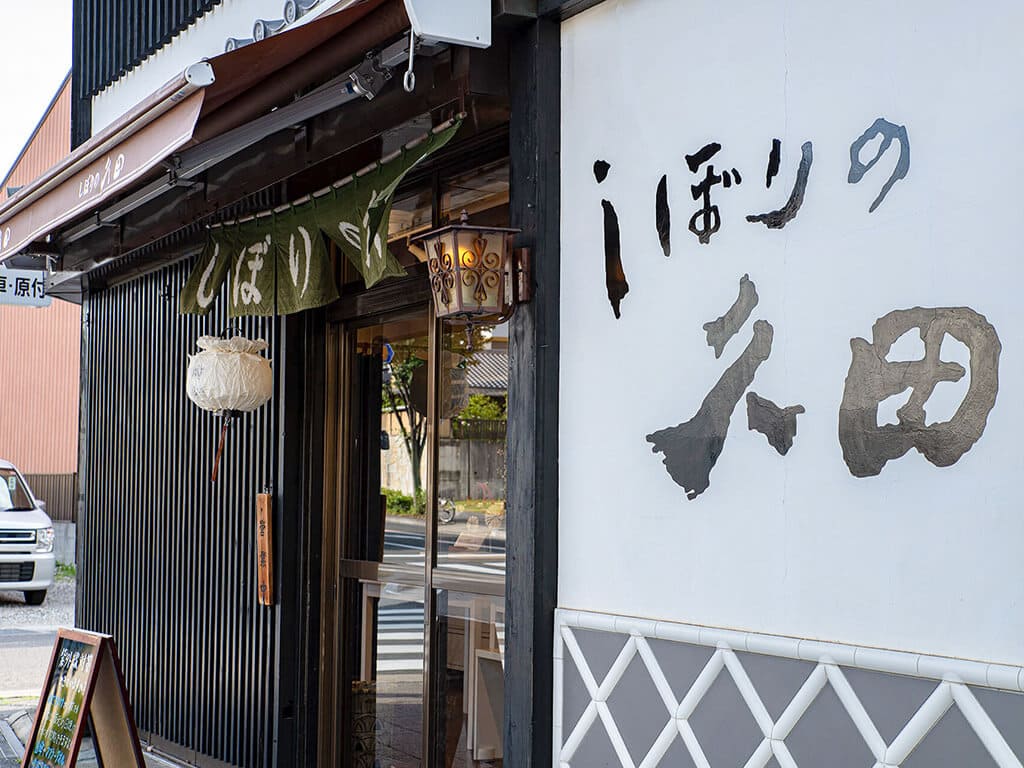
Arimatsu Shibori Hisada is a company that began with the birth of the Arimatsu Shibori technique at the beginning of the Edo Period and has continued to produce beautifully tie-dyed products over the centuries.
You can find a wide array of Shibori items such as towels, kimonos, and yukatas, as well as other clothing like shirts for men and women, Noren curtains, and other decorative items.
Arimatsu Shibori Hisada (有松しぼり久田)
Address: 616 Arimatsu, Midori Ward, Nagoya, Aichi 458-0924
Opening Hours: 10:00 – 17:00; closed on Mondays
Website | Google Maps
Kobo Yuhataya
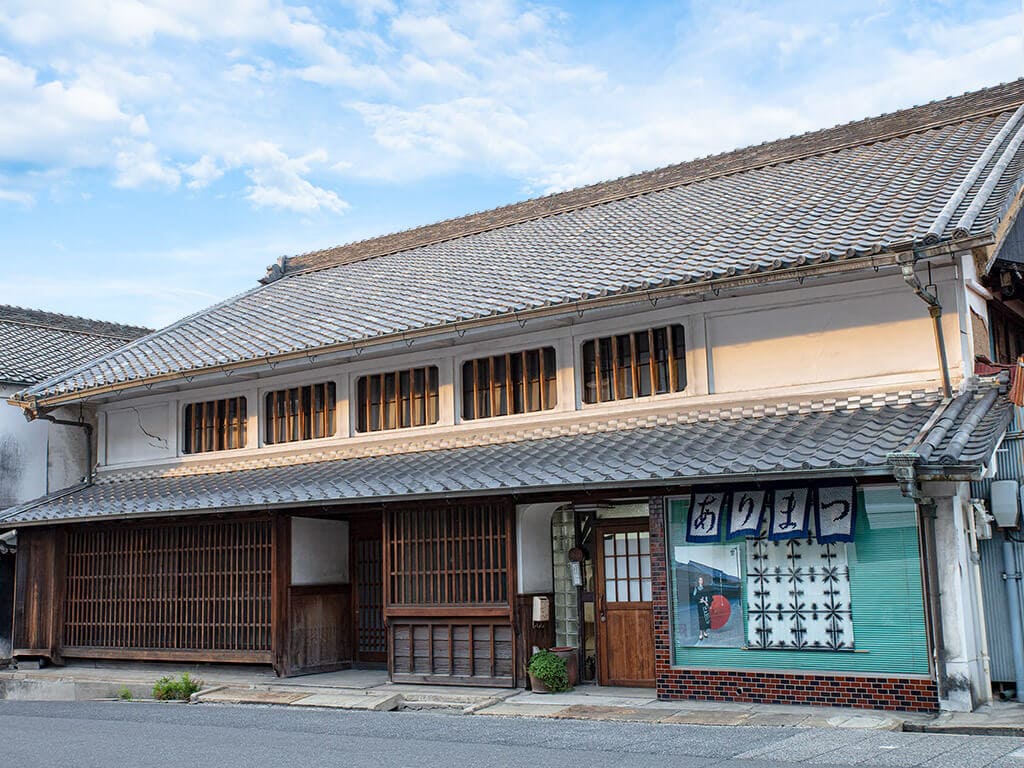
Right across the street from Arimatsu Narumi Shibori Tie-Dyeing Museum you will find Kobo Yuhataya, a small shop selling a variety of products made of Arimatsu Shibori fabric. Moreover, in the back of the shop there is a tiny study room where Shibori tie-dye workshops are held.
Kobo Yuhataya (工房ゆはたや)
Opening Hours: 10:00 – 16:30; closed on Wednesday
Address: 2345 Arimatsu, Midori Ward, Nagoya, Aichi 458-0924
Website (Japanese only) | Google Maps
Aya Irodori
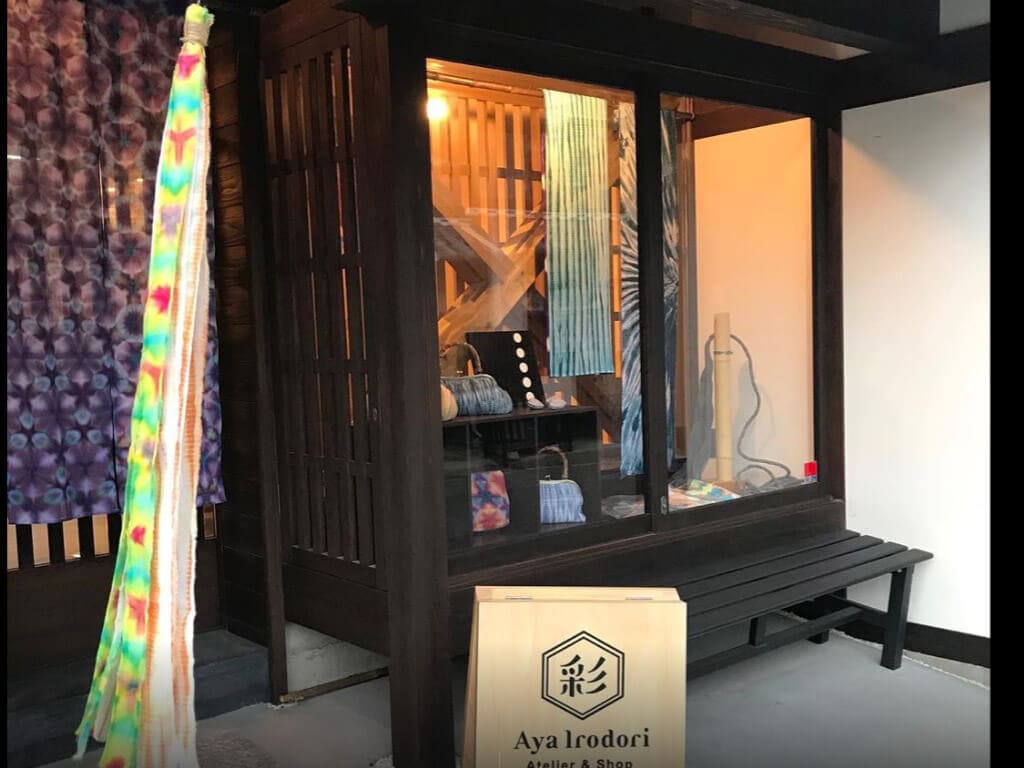
This is a small shop that offers clothing items and accessories made by hand, using the traditional techniques of Arimatsu-Narumi Shibori and the characteristic modern and creative touch of the artist Aya Osuka. Her creations are also available on her website’s online shop.
furthermore, at Aya Irodori you can join a tie-dying workshop without prior reservation (in Japanese only but foreign guests are welcome).
Aya Irodori (彩)
Address: 807-1 Arimatsu, Midori Ward, Nagoya, Aichi 458-0924
Opening Hours: 10:00 – 16:00; close Wednesday and Thursday
Website (Japanese only) | Google Maps
Get to know more about Nagoya’s local food by joining our Specialties of Nagoya Food Tour!
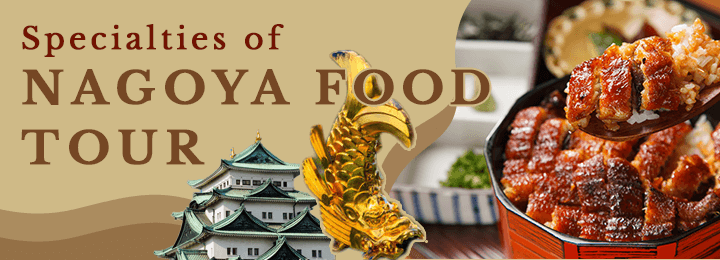
Best Places to Eat in Arimatsu
After exploring the beautiful traditional houses along the Tokaido, joining a Shibori experience, and shopping for unique handmade souvenirs, you are probably quite hungry.
While there aren’t many restaurants along the Tokaido in Arimatsu, the ones you can find here are worth a visit.
Yamato
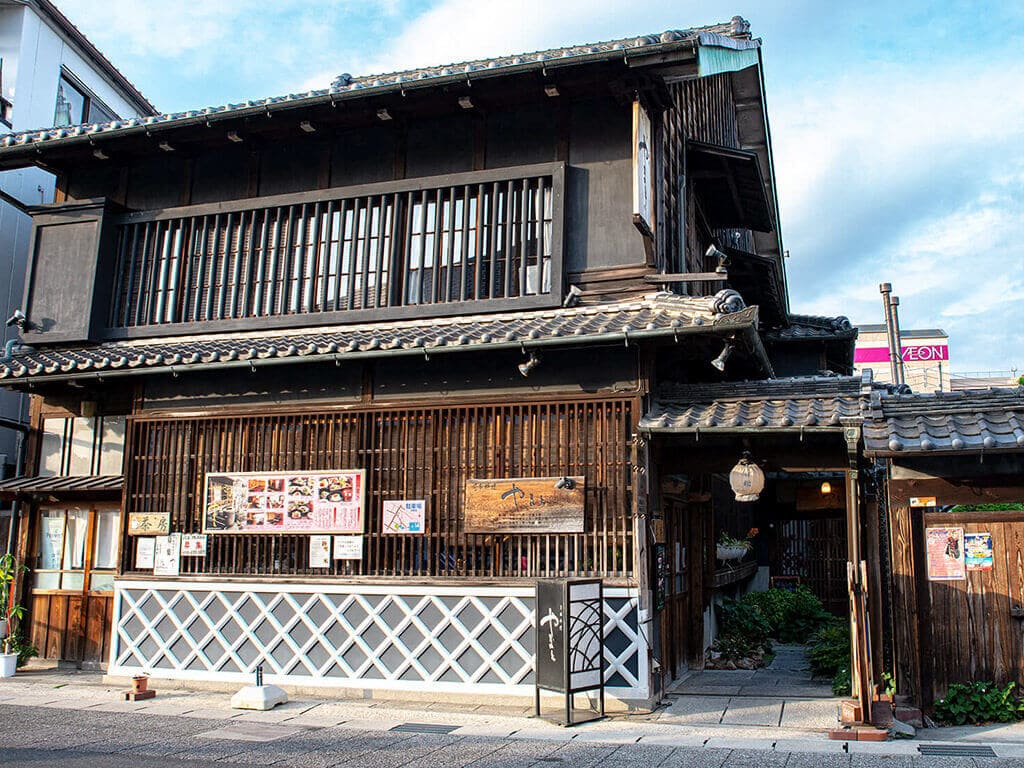
Yamato is a Japanese-style restaurant serving modern and creative cuisine made with local ingredients. It has a beautiful indoor garden and many private rooms where you can enjoy the food in a relaxing atmosphere.
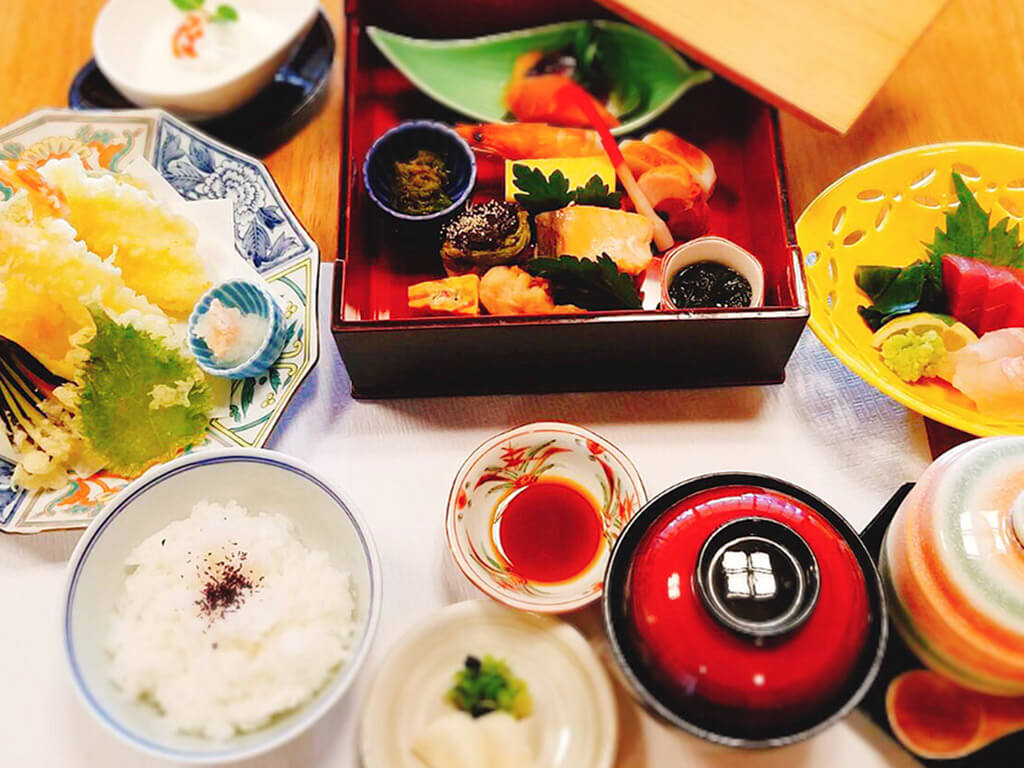
The price is a little steep, but the very elegant kaiseki dishes will delight your senses.
Yamato (やまと)
Opening Hours: 11:00 – 21:00; close Mondays and Tuesdays
Address: 2304 Arimatsu, Midori Ward, Nagoya, Aichi 458-0924
Website (Japanese only) | Google Maps
Jugemu Chaya
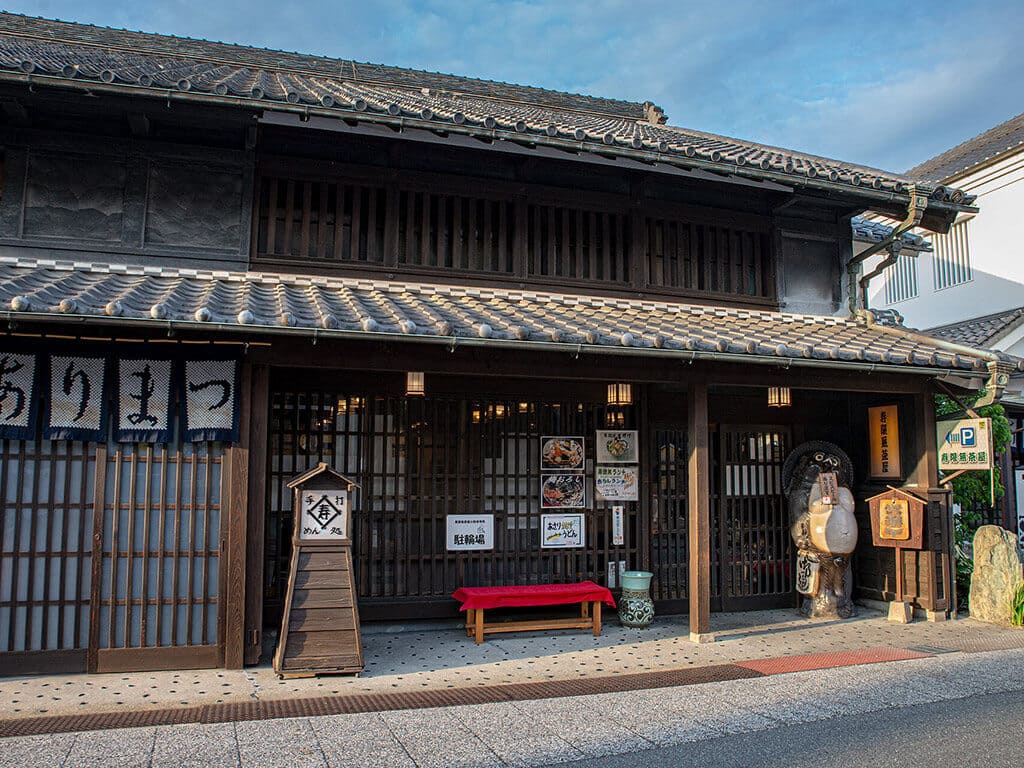
At this restaurant founded in 1959, you can savor traditional Japanese cuisine with a unique flavor. They offer fresh Udon and Soba noodles made by hand.
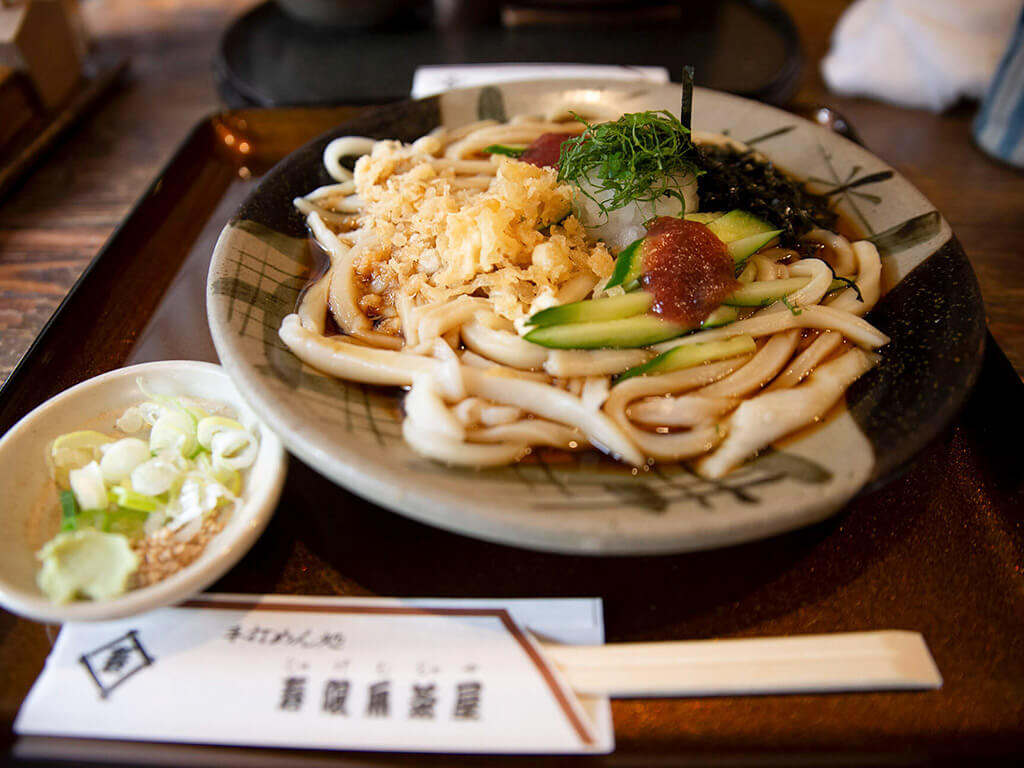
The specialty of the house is Ume Oroshi Udon, a Udon noodle dish topped with sour plum sauce and Daikon radish.
Jugemu Chaya (有松のお店 寿限無茶屋)
Address: 2339 Arimatsu, Midori Ward, Nagoya, Aichi 458-0924
Opening Hours: Weekdays 11:00 – 15:00 and 17:00 – 21: 00; closed Thursdays
Website (Japanese only) | Google Maps
Bakery Dasenka Kura
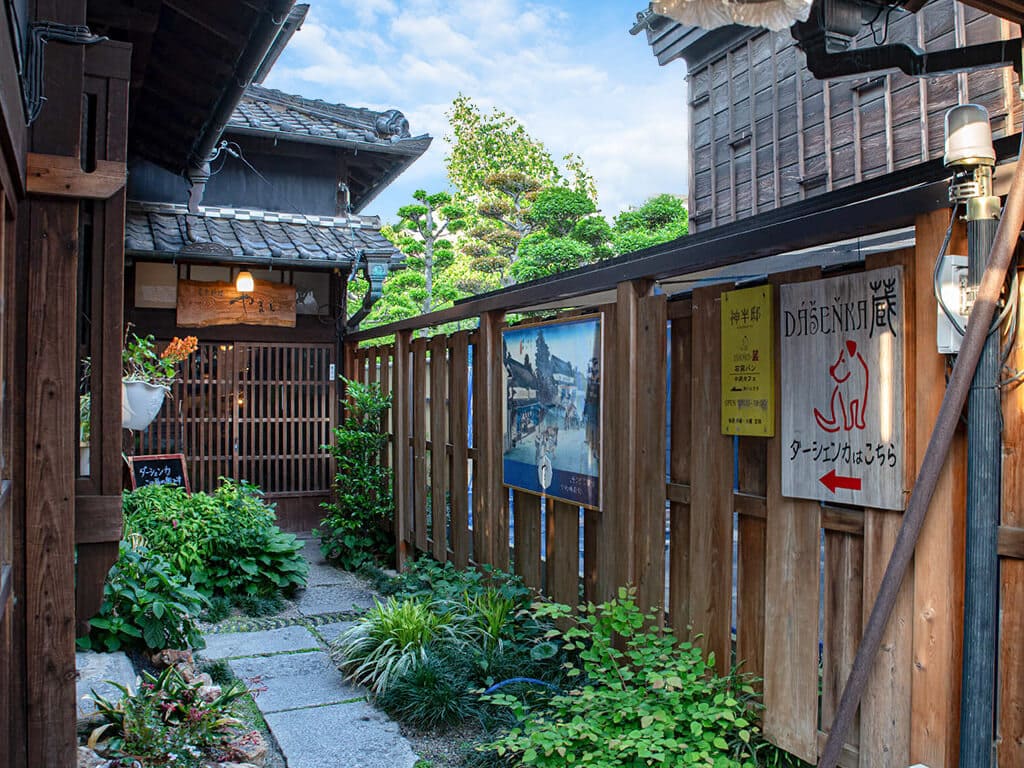
Dasenka is a bakery that sells handmade bread and pastries baked in a stone oven. The shop is located in one of the old Shibori merchant houses, making a visit to the bakery a pleasant experience even if you aren’t planning on buying any bread.
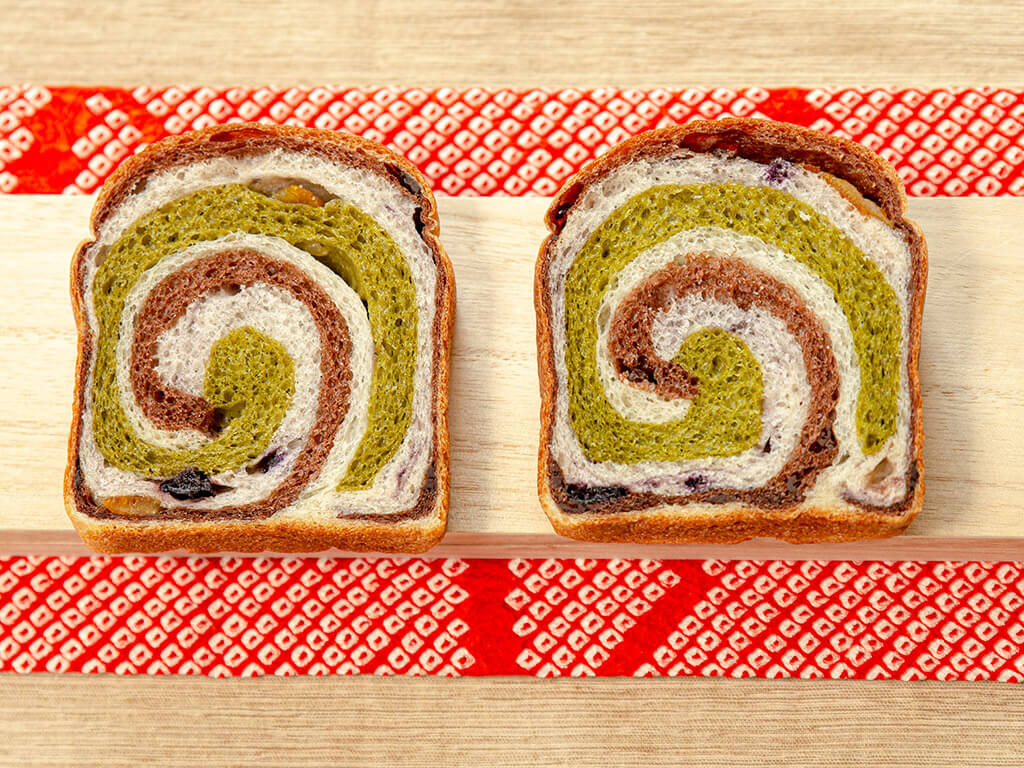
The “Arimatsu Shibori Bread” is a specialty of Arimatsu. It was proposed by a local high school student, inspired by the dyeing culture of Arimatsu Shibori, and has become very popular. The bread is made using natural food coloring imitating the Shibori patterns.
Dasenka Kura (ダーシェンカ 蔵)
Address: 2304 Arimatsu, Midori Ward, Nagoya, Aichi 458-0924
Opening Hours: 10:00 – 17:00; closed Mondays and Tuesdays
Website (Japanese only) | Google Maps
Get a glimpse into the world of Sake with our popular All-You-Can-Drink Sake Nagoya Nightlife Tour. By joining this tour you will learn a lot about Japan’s most famous drink while sampling a wide variety of different types of Sake in combination with delicious Izakaya foods. Tour details and booking here↓
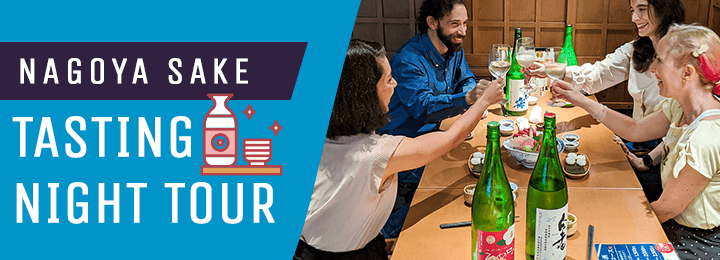
This post was last updated in May 2024.
Although we strive to provide you with the most accurate and up-to-date information possible, please note that changes may occur nonetheless. We recommend you confirm any relevant information such as event cancelations or changes, opening hours, or possible restrictions using a direct source. Please keep in mind that these sources might be in Japanese only.
Did you enjoy this article?
Make sure to also check out our other posts about Nagoya and trust us if we say Nagoya is not boring!
Be sure to follow us on Facebook for regular updates on Nagoya, and see our Instagram for pictures and stories about the city!
Tag us 📲
If you have visited Arimatsu before and if you want to share your best memories tag us on social media with #nagoyaisnotboring.

